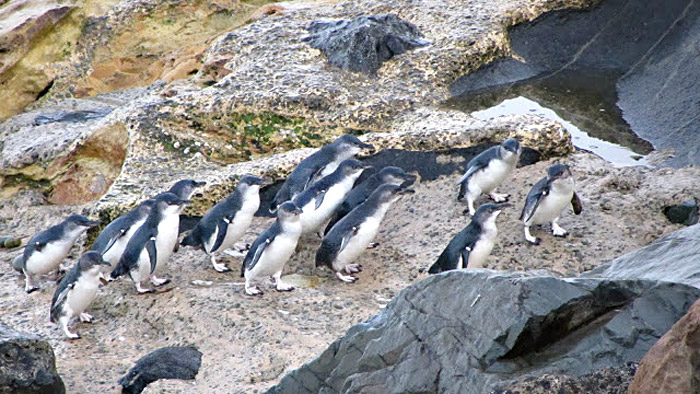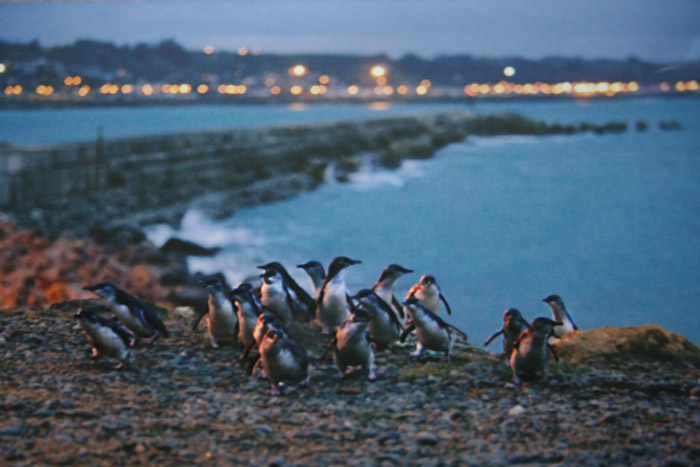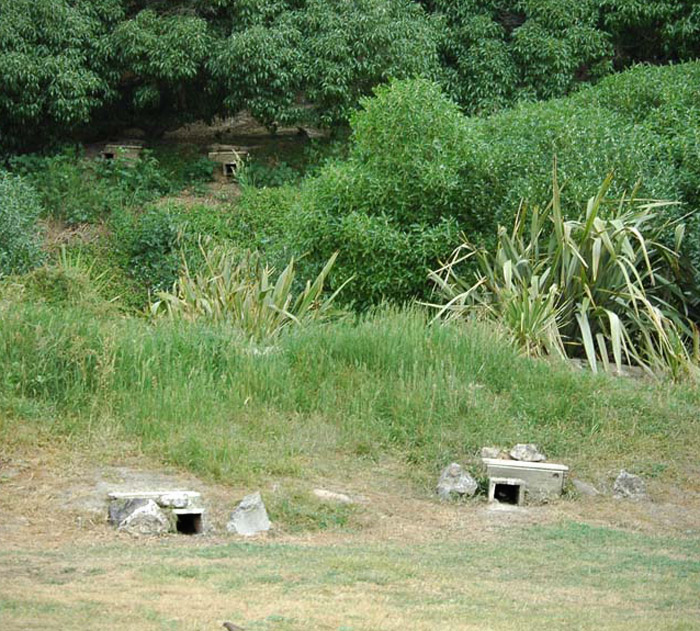Hole in the Clouds
Jul 13, 2013
 Years of drought have drastically lowered the water level of Lake Abbe, along the border between Djibouti and Ethiopia in the Horn of Africa. Vast stretches of what used to be lake bottom are now exposed, including clusters of limestone formations like these, many of which are chimneys venting sulfuric steam.
Years of drought have drastically lowered the water level of Lake Abbe, along the border between Djibouti and Ethiopia in the Horn of Africa. Vast stretches of what used to be lake bottom are now exposed, including clusters of limestone formations like these, many of which are chimneys venting sulfuric steam.
The chimneys formed when the vents were underwater; heat from the steam caused minerals to precipitate out of the lake water and build up around the rims of the vents.
Lake Abbe is a salt lake, the lowest point of a desert drainage system that has nowhere to drain. It's full of steam and sulfur because it's probably the birthplace of a new ocean, a triple junction of spreading faults where three tectonic plates are being pulled relentlessly apart from one another. Two of the faults are already so deep that they are full of ocean water: the Red Sea and the Gulf of Aden. The third fault stretches south from Lake Abbe through eastern Africa as a chain of lakes and deep depressions: the East African Rift.
Along these faults, tectonic plates are pulling apart from one another at rates approaching an inch a year, thinning out the earth's crust in the region, and generating much volcanic activity and gaseous emissions. The geologic evidence strongly supports the likelihood that someday the land around Lake Abbe will be thousands of feet underwater, near the middle of a big blue sea.
But it will take a while. Rifting began here about 60 million years ago. At current rates of divergence, the new basin is spreading roughly 10 miles every million years. In another 100 million years, we'll have an ocean about a thousand miles across.
The drought may (or may not) be over by then.
landscape
geology
Lake Abbe
triple junction
tectonics
Djibouti
limestone
Horn of Africa
(Image credit:
May 3, 2014
 About forty years ago, the limestone in the old quarry down by the waterfront in Oamaru was finally all worked out. The quarrymen left, taking their big machines with them.
About forty years ago, the limestone in the old quarry down by the waterfront in Oamaru was finally all worked out. The quarrymen left, taking their big machines with them.
The penguins moved in.
Penguins are common in seaside places all over New Zealand, and the Little Blue penguins like the ones in the Oamaru quarry are the commonest of all. New Zealanders generally seem to be fond of penguins and often place nestboxes in their yards to attract them. But city officials in Oamaru felt the town quarry was a terrible spot for a large penguin colony; for one thing, the birds were going to cause all kinds of traffic problems when they went waddling across the roads. For another thing, the quarrying operation had utilized some nasty chemicals, the residue of which might potentially sicken penguins. And then also, of course, somebody might want the real estate to feather his or her own nest, so to speak....

So the birds were moved out, to a site down the coast considered more appropriate. But they came back. Their nests were destroyed, and nice new nestboxes were offered them at the alternative site. They still went back to the quarry. Little Blues do that. They are the smallest of all penguins, not even knee-high, and they are homebodies.
Unlike many species of birds, including several penguin species, Little Blues do not migrate. They settle in communities of hundreds or even thousands of birds, often building their nests within a few feet of the spots where they themselves hatched and were raised.
Every morning, they gather in groups--called rafts--of a dozen or so birds that head down to the beach together and then out into the surf; they swim together for miles to their fishing grounds, where they spread out to spend the day alone, diving a few feet down to catch their favorite fish, a small, shallow-schooling variety called slender sprat.
Penguins have hooks on their beaks and barbs on their tongues, ideal for grabbing onto slippery fishy things.
Every evening, the penguin rafts reassemble and swim back to their home beach, where the birds emerge from the sea and climb back up the bluffs to their nests.
In 1992, the city of Oamaru finally gave up on its penguin-relocation project, perhaps because people had figured out how to monetize the colony. They fenced off the old quarry, opened a gift shop, sold tickets, even built a grandstand so visitors could sit comfortably while they watched the evening parade of feathered finery.
The organization that manages the Oamaru penguin colony also sponsors scientific research into penguin-human interactions. They report that the colony has continued to grow and thrive despite the thousands of tourists tromping through. Breeding pairs currently number about 160, laying between 250 and 500 eggs each spring, of which about 80% will hatch; about 80% of the hatchlings survive to fledge, when they can go out fishing on their own.
The quarry has been cleaned of old industrial waste and outfitted with nestboxes, some of which are designed so that researchers can watch the goings-on inside. And every evening, beginning around sunset, while tour guides keeps the tourists apprised of what the birds are up to, staff members carefully count the number of Little Blues coming back from the sea.
fish
New Zealand
Pacific Ocean
limestone
penguins
Oamaru
quarry
nest boxes
 Years of drought have drastically lowered the water level of Lake Abbe, along the border between Djibouti and Ethiopia in the Horn of Africa. Vast stretches of what used to be lake bottom are now exposed, including clusters of limestone formations like these, many of which are chimneys venting sulfuric steam.
Years of drought have drastically lowered the water level of Lake Abbe, along the border between Djibouti and Ethiopia in the Horn of Africa. Vast stretches of what used to be lake bottom are now exposed, including clusters of limestone formations like these, many of which are chimneys venting sulfuric steam. About forty years ago, the limestone in the old quarry down by the waterfront in Oamaru was finally all worked out. The quarrymen left, taking their big machines with them.
About forty years ago, the limestone in the old quarry down by the waterfront in Oamaru was finally all worked out. The quarrymen left, taking their big machines with them.

